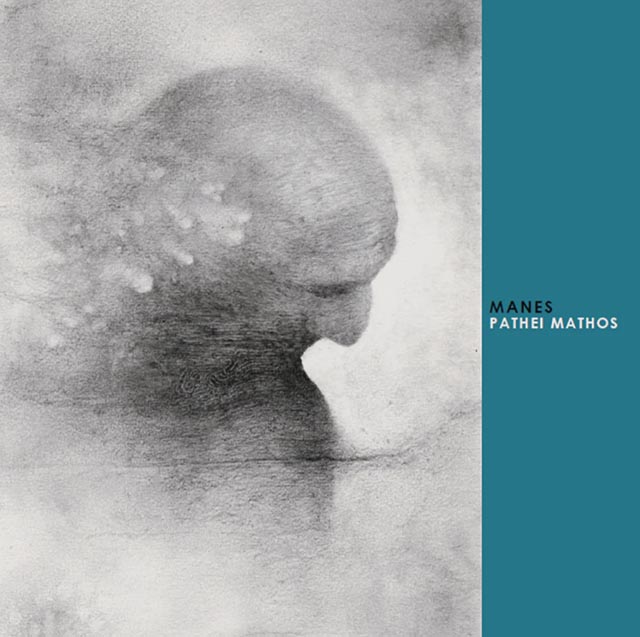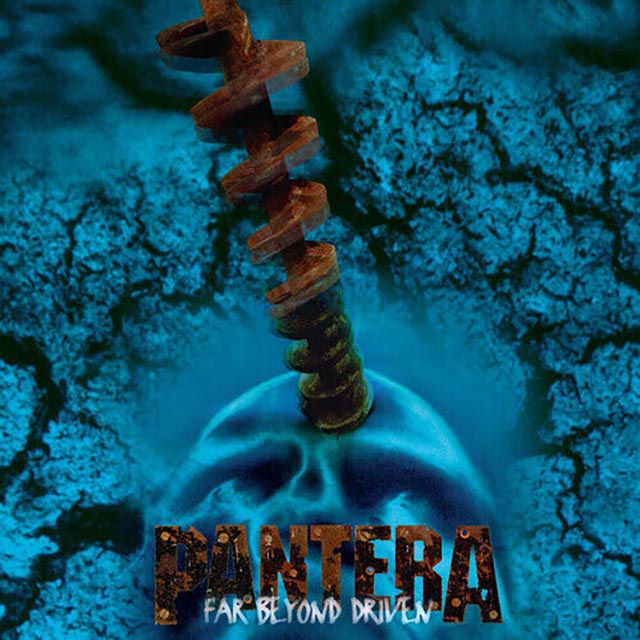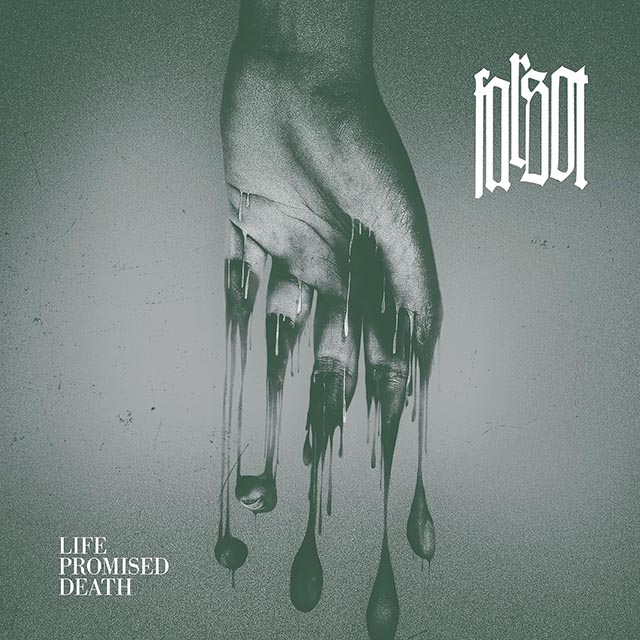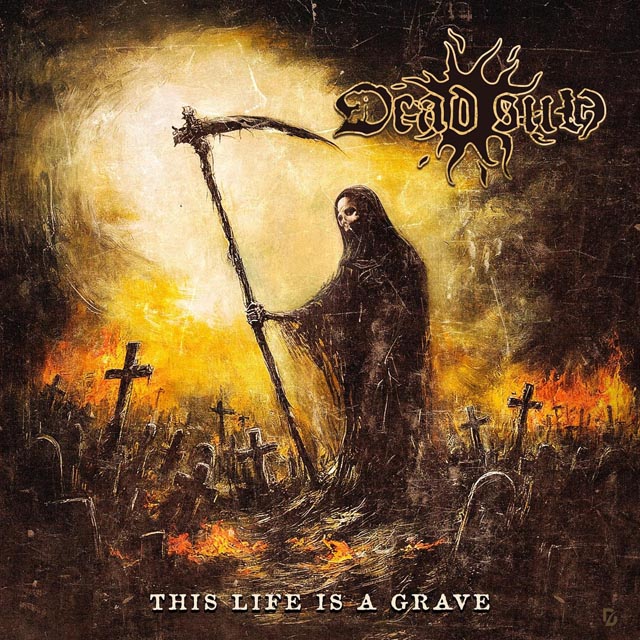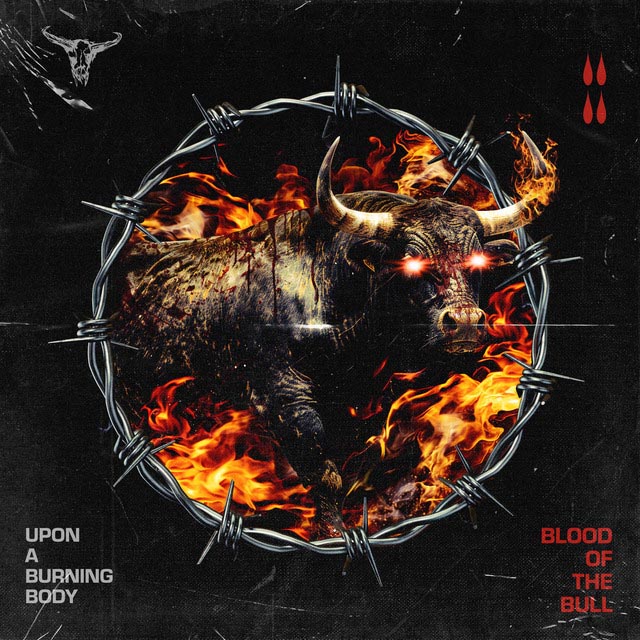If you don’t believe that Manes’ Slow Motion Death Sequence is one of the greatest albums ever made, you clearly have yet to experience it. Released in 2018, Slow Motion Death Sequence remains Manes’ latest full-length offering, though the band has since prepared the sensational EP Pathei Mathos. Manes began their journey as a pioneering black metal outfit. However, they debuted their groundbreaking stylistic shift on the ingenious Vilosophe. Through the years, Manes have continued to reside in a state of constant artistic exploration and flux that testifies to the outfit’s never-ending well of radical creativity.
Manes’ brilliant use of electronic elements is one of their most obvious assets. Components of an endless list of genres can be heard in their music: trip hop, jazz, metal, rock, experimental, pop, techno, punk, etc. Granted, Manes’ art evades proper description and defiantly stands in a category of its own. It exudes a very special and distinctive brand of unshakable magic that everyone must simply experience. Despite the list of phenomenal musicians who have passed through Manes’ ranks, Tor-Helge “Cernunnus” Skei, the group’s driving force and sole constant member, represents the main reason behind Manes’ supremacy. We must emphasize that Skei is a true genius. As a composer, he is absolutely unsurpassed. Thus, Shining’s wise (and, in my opinion, infallible) Sir Niklas Kvarforth, for example, has admitted in an interview that he has listened to Manes nearly every day for the past quarter century. Indeed, Skei’s brilliance, which has ignited the fires of so many artists, should be enjoyed on a daily basis.
Slow Motion Death Sequence was clearly mixed perfectly by Anna Murphy. This revered songstress is known for her past accomplishments with Eluveitie, fronts Cellar Darling, acts as Skei’s bandmate in Lethe, and so forth. Thanks to Murphy’s expertise, Slow Motion Death Sequence turned out exactly as it should have. In fact, Murphy deserves an award for her mixing work on this modern classic. The results she achieved here are some of the best that one can encounter. That said, the remix album serves as a fantastic supplement. It allows audiences to appreciate the excellence of Manes, as well as all who contributed to Slow Motion Death Sequence, in a new way by exposing and magnifying various facets of the record’s sophisticated yet savage beauty. Although Slow Motion Death Sequence never loses its novelty, the remix project still helped me, as it will others, view the original compositions as if for the first time. Remarkably, the later record prompted me to listen to its predecessor even more than I ordinarily do.
Verily, Slow Motion Death Sequence amounts to one of the most extraordinary journeys that listeners could hope to take. It is unbelievably gorgeous yet darker than all but the very best black metal, which basically means Skei’s and that of an extremely limited number of mostly related names. An ever-present sense of spontaneity pervades this nightmarish collection of lullabies as well. A nuanced potion stronger than absinthe, Slow Motion Death Sequence sedates its prey while conjuring images of crime scenes, love affairs, myths, and psychedelic visions. Needless to say, those remixing Slow Motion Death Sequence inherited a plethora of the most exciting sonic tools with which to work. In other words, they were gifted material that allowed innumerable possibilities: Slow Motion Death Sequence is absolutely everything, including an encounter with Nothingness.
Slow Motion Death Sequence features Skei on guitars, keyboards, and programming; Torstein Parelius on bass and vocals; Asgeir Hatlen on vocals; Rune Hoemsnes on drums, keyboards, and additional vocals; Eivind Fjoseide on guitars and keyboards; and Tor-Arne Helgesen on drums. It furthermore showcases guest vocalists Ana Carolina Ojeda, Tom Engelsøy, and Rune Folgerø in addition to Murphy, who astonishes in this regard as well. Meanwhile, Knut Prytz, formerly of the likes of Necrophobic and Gorelord, handled mastering.
The compositions on the 2018 album appear in the following order: “Endetidstegn,” “Scion,” “Chemical Heritage,” “Therapism,” “Last Resort,” “Poison Enough for Everyone,” “Building the Ship of Theseus,” “Night Vision,” “Ater.” By contrast, the tracklist for the 2024 record goes thus: “Endetidstegn (Aborym Remix),” “Building the Ship of Theseus (And Then You Die Remix),” “Night Vision (Område Remix),” “Scion (Throes of Dawn Remix),” “Endetidstegn (Jørgen Meyer Remix),” “Chemical Heritage (Fluffybunnyfeet Remix),” “Last Resort (Kristoffer Oustad Remix),” “Poison Enough for Everyone (Manes Alternative Version).” Yes, the remix effort omits the orgasmic earworm “Therapism” as well as the equally rewarding “Ater.” Instead, it contains two reimaginings of “Endetidstegn.”
Aborym’s “Endetidstegn” opens with the same lines as the original: “Come as you are. I’ll be waiting for you…” However, we no longer have the electrifying, pleasantly jarring yet calming, intro giving way to them or Parelius’ grounding touch of bass in the beginning, for instance. The reinterpretation seems tame at first, though it catches us off guard with quirky impulses. Hatlen and Ojeda’s voices are just golden. In combination, they are too much of an amazing thing. On Slow Motion Death Sequence, the overpowering fashion in which the layers of emotion climax and pummel us is more intense, but this remix is great in its own right.
As stated, next, we are treated to “Building the Ship of Theseus.” Since hearing the remix, which permitted me to reapproach this, by now more than familiar, song from an especially fresh angle, I’ve been playing the 2018 version loop. Fortunately, And Then You Die prudently digs into the harrowing current of this composition. We notice that the song has been slowed down. The sound and vibe are, of course, different, but the number is still fairly close in essence. Following this, Område’s “Night Vision” will strike fans as further away from what Manes created. This remix initially explores the creepy and soporific qualities of “Night Vision.” It takes almost a minute and forty seconds for the vocals to arise. The mood eventually changes, veering off in a playful direction. The remix ends softly with vocals of Hatlen’s that have been lowered in pitch. The conclusion is not unlike the start, minus the first thirty seconds or so.
The glorious “Scion” then kicks in. It became the second single from the 2024 album to drop. I shouldn’t say this, but I will: To me, “Scion,” is the best remix on the entire release, Manes’ alternative version of “Poison Enough for Everyone” excluded. Despite significant modifications, it stays true to the spirit of Manes and brings out an aspect of the composition that listeners wouldn’t otherwise have the opportunity to fully experience. In the original, the sweet and delicate, though pensive and heavy with melancholy, female vocals serve as a backing shadow. Here, they are the only ones present. Hatlen, as always, gave a flawless performance, and you never would have convinced me that eliminating it would have been a good idea. Yet, this remix serves as a terrific and addictive twin piece. Dark and romantic, it is both meditative and very human, though not in a weak way. “Scion” emanates a cerebral charm. Soothing, painful, and pregnant with meaning, this is an ideal love song. Another positive attribute of this pick is that it enables the pleasing guitars to shine through. None of Throes of Dawn’s artistic choices are even questionable. Therefore, their contribution never loses its focus and potency. This gentle yet profound gem even ends on a strong note.
Jørgen Meyer’s take on “Endetidstegn,” Slow Motion Death Sequence Remixed’s first single, commences with lines that Hatlen uttered at the midpoint in Murphy’s mix: “What do we know? Who do you see?” Meyer has added a certain brightness. His spin on the song could be referred to as the club variant. In context, the repeated question “Who am I…?” eventually acquires a different kind of thrust that feels more open-ended and less brooding than on the 2018 track. Fluffybunnyfeet’s metamorphosed “Chemical Heritage” is similarly brighter than its forebear but to an even greater extent. The faster and more energized remix imbues the number with an almost opposite type of tone than it had on its somewhat morose first coming. The beat also increases in prominence. This may be described as the techno rave version of the composition. As previously, you can admire the spoken phrases, which are delivered with impeccable cadence, as well as the excellence of Asgeir’s vocals, though they have been altered this time around. Before moving on, I will take the liberty of mentioning that “Chemical Heritage” happens to be one of my favorite songs. I basically listen to it each day, and so should you. “Chemical Heritage” is a strangely agonizing triumph that I somehow derive immense satisfaction from. It manages to empower and uplift, something that would disgust a misanthrope like me if not simultaneously done in such an artfully downcast manner.
“Last Resort,” is another one of my favorite songs. The miraculous original arguably boasts two of the most impactful, transportive, and emotionally lacerating vocal performances, male and female, of all time. This graceful number builds with the most breathtaking, flowing waves. It is incredibly charged and possesses a graceful balletic quality. Therefore, it seems to compel non-lazy listeners into physical motion. “Last Resort” ultimately provides something akin to a spiritual experience. Manes may be said to Vilosophize with a hammer, and Kristoffer Oustad’s remix is totally deconstructed, stripped beyond recognition. Even the vocals have been removed. Sowing the seeds of discord, this anxiety-inducing ambient track is certainly a fitting interpretation of the title.
I must say that the standard version of “Poison Enough for Everyone” benefits from one of the most haunting and magical beginnings of any song ever. Manes’ second formulation of “Poison Enough for Everyone” is truly outstanding as well. In addition to Hatlen’s confident and sassy vocals with the likewise familiar female echoes in the background, this variant incorporates a robotic voice. This eerie and partially alien victory masterfully balances the organic and the synthetic. It proves that you can take away some of the highlights of a song and still achieve magnificent results.
The verdict: If you don’t purchase both Slow Motion Death Sequence and Slow Motion Death Sequence Remixed, you are missing out on the best and deserve the worst! Even now, I can’t wrap my head around the magnificence of Slow Motion Death Sequence. If this masterpiece could force an incorrigibly arrogant snob like me to want to genuflect before its creators, it, along with its companion, certainly equates to a must-hear and a must-revisit for every single individual with functioning ears.
(Order Manes’ Slow Motion Death Sequence Remixed here.)




